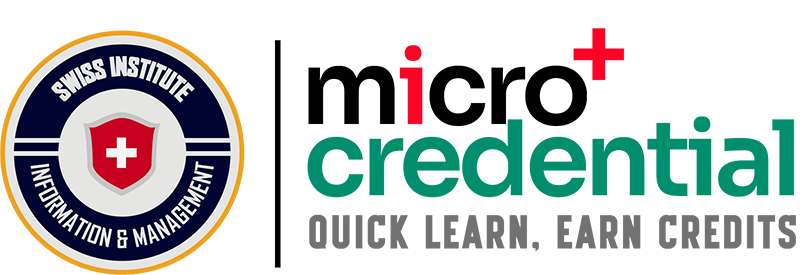Level 3 Award
in Computer Systems
Level 3 Award could transfer 20 credits and full tuition fees to Level 3 Diploma programs of SIMI Swiss.

Level 3 Award in Computer Systems
The aim of this award is to help learners understand different types of businesses, their ownership structures, and the roles of owners and stakeholders in achieving business goals. It also explores how businesses are organized to meet targets and how economic, political, legal, and social factors impact various types of businesses.
Could transfer 20 credits and full tuition fee to the Level 3 Diploma in Information Technology of SIMI Swiss.
Learning Outcomes:
1. Understand the purpose of computer systems.
- 1.1 Explain different types of computer systems.
- 1.2 Evaluate the role of computer systems in different environments.
- 1.3 Identify a range of computer systems that you use.
2. Understand computer system components.
- 2.1 Discuss the common Hardware components of a computer system
- 2.2 Discuss the common Software components of a computer system
- 2.3 Evaluate the differences between open source and closed source software.
3. Be able to configure computer systems.
- 3.1 Analyse different operating systems and their suitability in managing resources in a professional environment.
- 3.2 Describe the characteristics of different styles of computer system users.
- 3.3 Evaluate suitable components to meet user requirements within a professional environment.
- 3.4 Configure a computer system for a given user requirement.
Topics:
Understand types of computer systems and their environments
Course Coverage
- Types of computer systems: Personal Computer (PC), laptop, netbook, smartphone, smartwatch, games consoles, tablet, server, Internet of Things (IoTs).
- Environments: manufacturing, production, home, office, education, medical, pharmaceutical, retail, sports.
- Personal use of computer systems.
Explore hardware components of computer systems
Course Coverage
- Hardware components:
- Arithmetic and Logic Unit (ALU), Control Unit, Registers (Program Counter; PC, Accumulator; ACC, Memory Address Register; MAR, Memory Data Register; MDR, Current Instruction Register; CIR).
- Storage devices: hard disk drive, ROM, flash drive, DVD/Blu-ray Disc (BD).
- Input devices: touch screen, graphics tablet, gaming controller, microphone, mouse, keyboard.
- Output devices: printer, monitor, sound.
- Computer network connectivity: 3G, Wireless, Bluetooth, NIC.
Understand software components of computer systems
Course Coverage
- System software, Applications software, Software utilities.
- Open source vs closed source: pricing, availability, scope of engagement, structures, codes, platforms.
- Operating systems: Microsoft Windows (Windows 10, 8, 7, Vista, XP), Apple’s macOS, Chrome OS, Linux, Unix, Ubuntu.
Understand system users and interface requirements
Course Coverage
- Characteristics of user interfaces: command-based, forms, dialogue, natural language, WIMP (windows, icons, menus, pointer), and their appropriate uses.
- User requirements: office, home; tasks like data recording, photo/video editing, media use.
Understand system software, applications, and utilities
Course Coverage
- System software: operating systems, system tools, diagnostic tools, file managers, disk utilities, backup, synchronisation; network connections like workgroups, email, FTP.
- Applications software: word processing, spreadsheet, presentation, database, graphics, web browser, email client.
- Utilities: clean-up tools (cookies, internet history), defragmentation, drive formatting, antivirus, adblockers.
Connect, set up, and install hardware and software
Course Coverage
- Connect and set up equipment: monitor, printer, modem/router, keyboard, mouse, speakers, microphone, RAM, hard drive.
- Install hardware: graphics card, sound card, CD/DVD drive.
- Install software:
- Operating system software (e.g., Windows).
- Applications software (e.g., Microsoft Office).
- Security software: virus checkers, firewalls.
- Device drivers.
- Create directory/folder structures.
- Other devices: tablets/phones using other operating systems.
Indicative reading list
- Nisan, N. (2020). The Elements of Computing Systems : building a modern computer from first principles. MIT Press.
- Bryant, R.E. and O’Hallaron, D.R. (2016). Computer systems : a programmer’s perspective. Boston: Pearson.
Entry requirements
- Applicants must be at least 16 years old.
- Completion of full secondary education is required.
English requirements
If a learner is not from a predominantly English-speaking country, proof of English language proficiency must be provided.
- Common European Framework of Reference (CEFR) level B2 or equivalent
- Or A minimum TOEFL score of 101 or IELTS 5.5; Reading and Writing must be at 5.5 or equivalent
- Or A minimum Pearson Test of English Academic (PTE Academic) score of 51 or equivalent
The SIMI Swiss reserves the highest decision-making power for admission whether to accept or not accept after a specific review of each candidate’s profile to ensure that they can comprehend and gain benefits when participating. For the fake university or diploma mills, University Partners shall not be accepted.
After graduating with Level 3 Award, students receive all certified documents from the SIMI Swiss.
Certified Documents:
- e-Certificate from the Swiss Information and Management Institute (SIMI Swiss).
- Hard copy certificate from the Swiss Information and Management Institute (SIMI Swiss) – Optional.
- Accreditation of Prior Experiential Learning for Qualifications (APEL.Q) certified from SIMI Swiss for credit and tuition fee transfer.
Because the program is accredited and recognized, students can easily use certified in the working environment and have many opportunities for career advancement. In addition, in case if you want to study for a SIMI degree or university partner degree, students can convert all credits and the full paid tuition fee.
The SIMI Swiss’ Level 3 Award means:
The SIMI Swiss Level 3 Award is a qualification at the foundational level and is equivalent to the following:
- Level 3 Certificate of the Regulated Qualification Framework (RQF) in the UK
- Level 6 Certificate of the Scottish Credit and Qualifications Framework (SCQF)
- Level 3 Certificate of the Credit and Qualifications Framework for Wales (CQFW)
- Level 3 Certificate of the European Qualifications Framework (EQF)
- Level 4 Certificate of the Australian Qualifications Framework (AQF)
- Level 3 Certificate of the ASEAN Qualifications Reference Framework (AQRF)
- Level 4 Certificate of the African Continental Qualifications Framework (ACQF)
Students can convert all credits and the full tuition fee when participating in the SIMI Swiss and/or University Partners academic programs if they want to study for an academic degree.
Credits transfer:
Learners can accumulate 20 credits from the Level 3 Award program when participating in the Level 3 Diploma program. Please see the credit transfer policy HERE
Tuition fee transfer:
When participating in the Level 3 Diploma program, students who have graduated 1 Level 3 Award will receive a discount of full tuition fee which you paid. Please see the tuition fee transfer HERE
The SIMI Swiss micro-credential program allows for the transfer of credits and tuition fees into full degree programs from SIMI Swiss and/or its university partners. SIMI Swiss reserves the right to limit admissions once the number of students exceeds the quotas.
Apply Policy:
- To participate in the SIMI Swiss micro-credential program, students need to meet the entry criteria corresponding to each level. Please see the “Entry” tab for more details.
- SIMI Swiss will not accept applicants if their entry qualifications are from diploma mill universities or schools/universities that are not accredited.
- English is not a mandatory entry requirement for Micro Credential programs, but candidates need to ensure that English is used in reading documents, listening to lectures, and doing assignments. Candidates should note that English is a mandatory requirement when switching to an academic program at SIMI Swiss and University Partners.
Apply Process:
- Choose the program that suits your requirements.
- Email your application to support@simiswiss.ch with all the required documents. You can download the application form here.
- Our admission department will contact you and guide you through further processes if the registration documents need to be supplemented.
- SIMI Swiss will issue the Letter of Acceptant (LOA). You wil proceed to the next steps according to the instructions and pay tuition fee.
- SIMI Swiss will issue a student confirmation letter, login account to the e-learning system and related documents.
- You have become an official SIMI Swiss student and enjoy your study journey.
The SIMI Swiss micro-credential program is fully online, allowing you to study anytime, anywhere. You have the option to attend live classes with SIMI Swiss. The final exam will be uploaded to the system and evaluated by the academic panel of SIMI Swiss. Students must submit assignments on time; failure to do so will result in the student being considered to have discontinued the program.
Pricing Plans
Take advantage of one of our non-profit professional certified programs with favorable terms for your personal growing carreers.
- Full online videos
- e-Books
- Self-study contents
- Online tutor videos
- Assignment guide
- e-Certificate
- Hard copy certificate
- Accreditation & Recognition certified from University Partners
- Deliver hard copy certificate and all certified documents to your home
- Transfer full credits & tuition fees to equivalent academic programs
- Get more support tuition fees and scholarships when becoming SIMI' international students
- (*) In the event that you receive a scholarship or discount, the fee you should transfer is the amount you actually paid.
SWISS MICRO CREDENTIAL
Contact us
If you interested this micro credential course, please feel free to contact with us! Please note that this program is a not for profit and learning with full online model.
